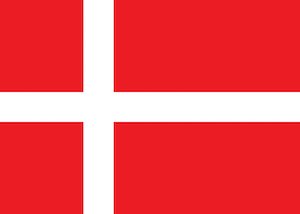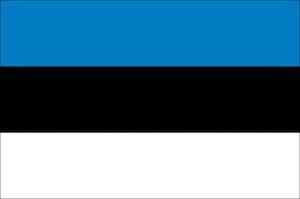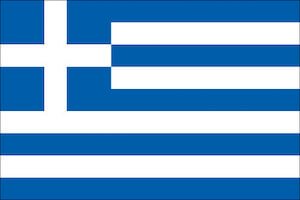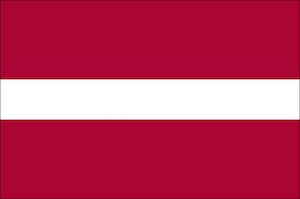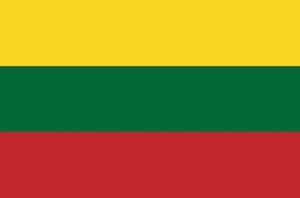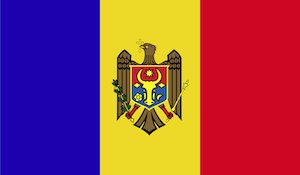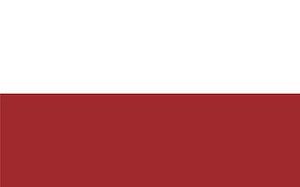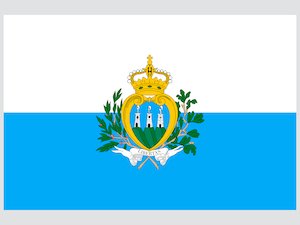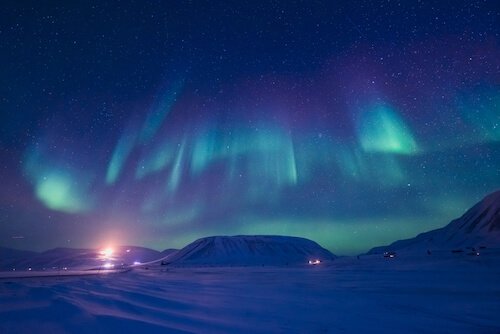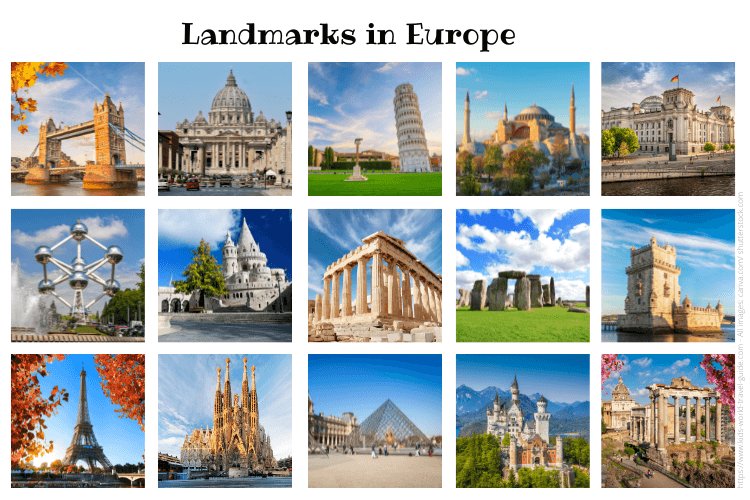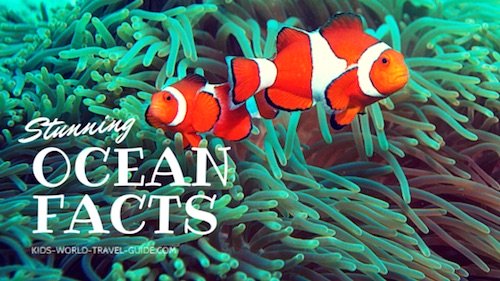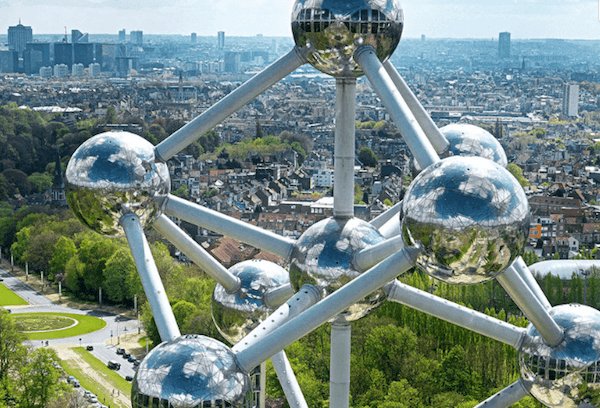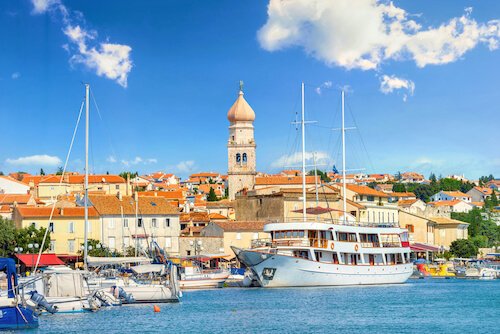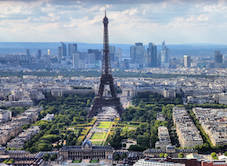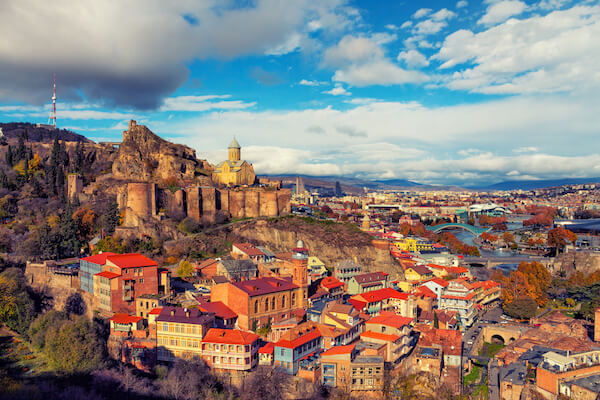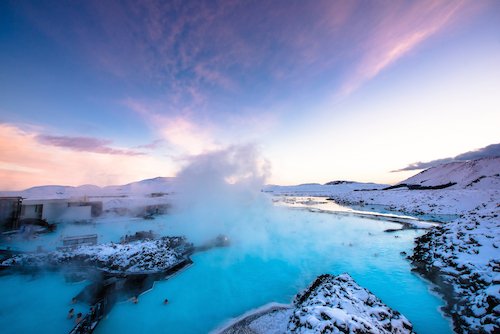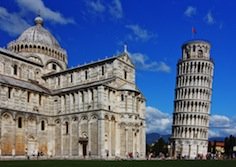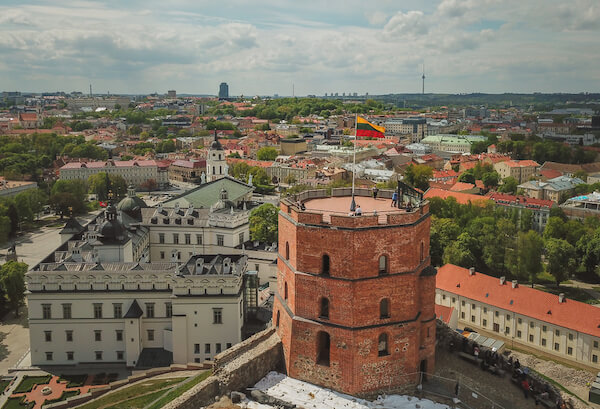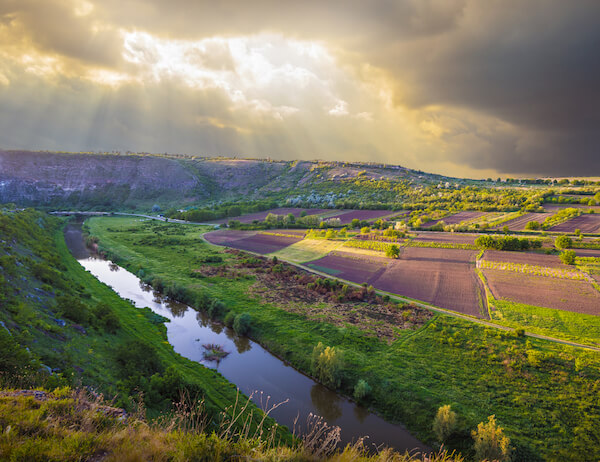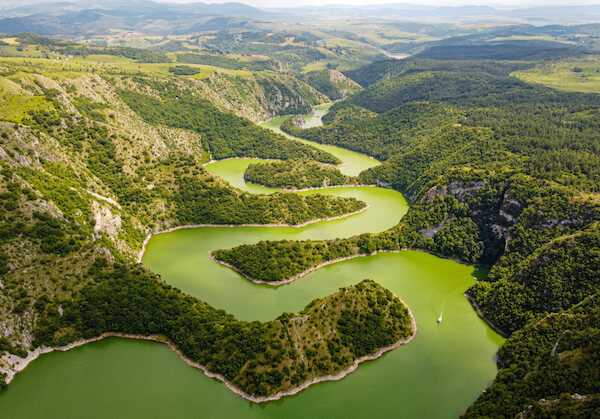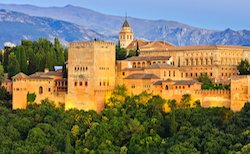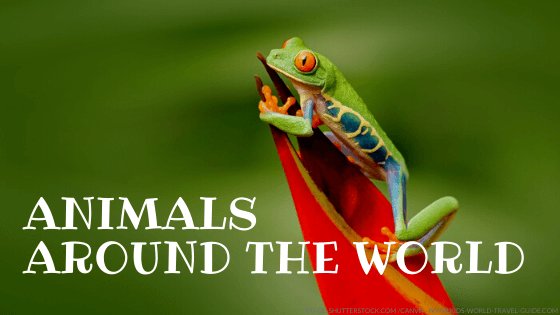- Homepage
- Europe
Europe Facts
Our Europe Facts for Kids share lots of interesting and fun facts on the European continent.
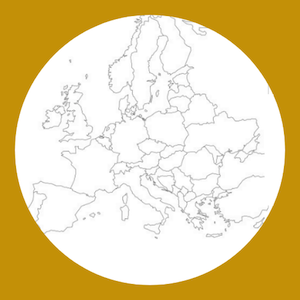
Europe is the second smallest continent in size but the third largest in population.
The European continent houses land area of 50 countries. However, of these 50 countries only 44 have their capital city on the European continent!
Of the European countries, 27 nations belong to the European Union (EU) which is a political and economic union. Read more about the EU on our special page here.
Now we share 20 facts about Europe everyone should know. Let's start!
Top 20 Europe Facts
1. The European continent is located completely in the northern hemisphere and mainly in the eastern hemisphere.
Europe borders onto the Arctic Ocean in the North, the Atlantic Ocean in the West and the Mediterranean Sea in the South.
 Map of countries on the European continent
Map of countries on the European continent2. There are 50 countries in Europe with a total of more than 745 million people living on the continent in 2025. The UN recognises 44 countries in Europe.
Click on the flags to learn more about some of these countries in Europe (more country facts will be added by us soon!):
 Albania Albania |
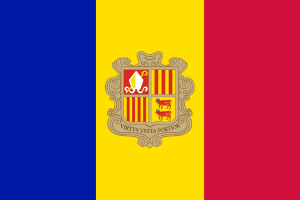 Andorra Andorra |
 Azerbaijan Azerbaijan |
 North Macedonia North Macedonia |
3. Largest country: The three largest countries that are completely located in Europe are Ukraine, France and Spain.
The European part of Russia covers more area than any other country on the continent. However, as Russia is a intercontinental country and is located on both continents Asia and Europe, Ukraine is commonly regarded as the largest country in Europe.
4. Largest capital city: Moscow. The Russian capital city houses more than 13 million inhabitants within the city limits. Saint Petersburg is Russia's second largest city with 5.3 million inhabitants. Moscow is the largest city that is entirely on the European continent!
Istanbul is set to be the largest city in Europe in 2025 - remember however, Istanbul is a transcontinental city!
5. Smallest country: Vatican City is the smallest country not only in Europe, but also in the world. The city state also referred to as Holy See is an enclave within Italy. Vatican City is the smallest country both by population and by size. Read more about Vatican City here.
6. Biggest island: The biggest island on the European continent is the isle of Great Britain/ UK. Greenland is the largest island which politically belongs to Europe as the island is part of the Kingdom of Denmark. Greenland is commonly referred to as the largest island in the world, however, Greenland is located on the North American continent!
7. Smallest town: Hum in Croatia is the smallest town not only in Europe but in the world. The town has only 30 inhabitants. Read more about Croatia here.
8. Most populous city: Istanbul, the biggest city in Türkiye is commonly referred to as Europe's largest city. However, Istanbul is located on two continents: the western part belongs to Europe while the eastern parts belongs to the Asian continent. Istanbul houses about 17 million people. Read about Turkey/Türkiye here.
However, the most populous city that is located entirely in Europe is Moscow!
9. Most densely populated country: Monaco. The principality bordering the Mediterranean is the most densely populated country in the world.
10. Europe is the continent with the highest population density, which means on the European continent live the biggest number of people per square kilometre or square mile. The most densely populated city in Europe is Paris, while Athens in Greece is also amongst the ten most densely populated cities of the continent.
11. Northernmost town: Ny-Ålesund on Svalbard in Norway. Only about 35 people live there all year round, but in summer, there are about 120 people staying in the town. The town is used as a base for explorations and research.
12. Northernmost capital city: Reykjavík in Iceland is Europe's and the world's most northern capital city. Read more about Iceland here.
13. Largest landlocked country: Kazakhstan is the largest landlocked country in Europe and in the world. 20 million people live in Kazakhstan which is among the ten biggest countries in the world. However, only about one fifth of the country's land area is located on the European continent. The largest landlocked country located entirely on the European continent is the Czech Republic.
 Prague in the Czech Republic
Prague in the Czech RepublicLandlocked countries in Europe: Many countries in Europe, mainly in central Europe, do not have access to an Ocean and share national borders only with other countries. These are landlocked countries in Europe:
Andorra, Armenia, Austria, Belarus, Switzerland, Czech Republic, Hungary, Kazakhstan, Kosovo, Bosnia-Herzegovina, Liechtenstein, Luxemburg, Slovakia, Serbia, Moldova, Macedonia, San Marino and Vatican City.
San Marino and Vatican City are landlocked inside Italy, and Liechtenstein is double landlocked as it is landlocked also by countries Austria and Switzerland that are also landlocked by other countries.
14. Highest mountain: Mount Elbrus in Russia (5,642 m/ 18,510 ft) is the highest mountain in Europe. The mountain is part of the Caucasus mountain range.
 Mount Elbrus
Mount ElbrusThe highest peak in the European Alps is Mont Blanc. The mountain which is 4,810 m/ 15,781 ft high sits on the border of Italy and France. The Alps are also the longest and highest mountain range that is located entirely in Europe!
15. Longest river: The Volga River in Russia is Europe's longest river. It is 3,692 km/ 2,295 miles long.
 Volga River
Volga River16. Most important commercial waterway: Danube. The river that flows through ten countries is the second longest river in Europe with 2,860 km/ 1,777 miles.
17. Largest port: The port of Rotterdam in the Netherlands is the largest and busiest container port in Europe.
18. Longest Coastline: Norway has the longest coastline in Europe with over 100,000 km/ 62,000 miles; and it is the second longest in the world. Read more about Norway.
19. Biggest Lake: Lake Ladoga near Saint Petersburg in Russia is Europe's biggest lake and one of the world's largest freshwater lakes. The lake is slightly smaller than Lake Ontario, which borders the USA and Canada.
20. Largest waterfalls: The Rhine Falls in Switzerland is the largest plain waterfall in Europe. They are 150 m/ 492 ft wide and 23 m/ 75 ft high.
More Facts about Europe
Europe Facts | People: About 10% of the world's population lives in Europe. In Russia, more than 75% of the country's population (more than 110 million people) live in the European part of the the world's largest country.
Most of the European population groups, almost 90%, belong to one of the three Indo-European language groups of the Slavic, Romance and Germanic language groups.
According to the World Happiness Report 2025, the World's happiest people live in Finland!
Europe Facts | Languages: Most European languages belong to either the Romance languages (such as French, Italian, Spanish), the Germanic languages (among them are German, English) or the Slavic languages (among them Russian, Bulgarian, Polish). Russian is the language with most native speakers (about 100 million), while English as the 'lingua franca' is the language spoken by most people as first and second language (about 270 million people). The five most spoken native languages in Europe are Russian, German, French English, Turkish and Italian.
Europe Facts | Religion: Most of the European people are Christians (76%) and there are smaller numbers of Muslims (6%) and Jews and other beliefs. About 18% of all Europeans consider themselves as atheist or not religious.
Europe Facts | Animals: In Europe, there are 270 species of mammals, such as boar, bat, deer, hare and otter. Of all mammal species 15% are endangered among them the wolf, bear and the lynx. There are 75 species of amphibians in Europe, most of them are endemic species in Southern Europe such as newts and salamanders. Slightly more than half of the 800 European bird species breed in Europe, all others migrate to warmer regions during the cold winter months.
Spain and Greece house the highest number of threatened and endangered animal species in Europe. There more than 10% of all species are considered threatened!
Europe Facts | Natural resources: Metals such as zinc and silver and minerals such as copper, iron ore and coal are found in Europe. Some areas in northern Europe have deposits of natural gas and oil. Common agricultural produce that are farmed in Europe are wheat, potatoes, olives, grapes, oranges.
Europe Facts | Agriculture: About 39% of the land area in Europe is grassland or used for growing crops. The most common crops are cereals such as wheat, maize and barley as well as sugar beets, potatoes, vegetables and fruits and wine. France is Europe's biggest producer of agricultural products.
Europe Facts | History: The first humans appeared on the continent about 35,000 BC. The Minoan civilisation in the Bronze Age is seen as the first culture establishing trade and 'technology' from 2700BC. Among the many ethnic groups of the continent, the Greek tribes and the Germanic and the Italic people (later also the Roman Empire) had vast influences on the whole region as had the Celts. Later during the Middle Ages, the population increased due to the Vikings, Mongols, Huns, Magyars, Tartars and many other peoples that arrived and settled in the area. Europe's modern history is largely influenced by wars, such as the 30-Year-War (1618-1648), the French Revolution (1789) and the two World Wars in the 20th century. During World War I (1914-1918) more than 8 million people lost their lives and in World War II (1939-1945) over 18 million people died on the battlefields, during bombardment of the towns and cities and in Nazi concentration camps. In 1993, the European Union was established which today includes 27 countries.
Europe Facts | Landmarks: Five out of the top ten tourist destinations in the world are located in Europe. France is the number 1 tourist destination in the world with about 100 million international tourist arrivals per year - followed by Spain.
Among the most visited tourist sites and landmarks in Europe are:
- Big Ben and Tower Bridge of London in the UK
- Eiffel Tower in France
- Neuschwanstein Castle in Germany
- Familia Sagrada in Spain
- Winter Palace in Russia
- Acropolis in Greece
- Roman Forum in Italy and so many more...
Read about the world's top landmarks you really should know. Click here.
Now test your Europe Geo Knowledge with our Europe Quiz
Popular Pages
Useful Resources | Europe Facts
- Rob Smith. "Monaco is the world's most densely populated place." World Economic Forum. 20 March 2018. Last accessed on 16 July 2025
- Croatia National Tourism Board. "The Smallest Town in the World." Croatia.hr. Last accessed 16 July 2025
- Visit Svalbard. "Ny-Ålesund. The northernmost town in the world." Svalbard Tourism. Last accessed on 16 July 2025
- Reykjavík Tourism. "Capital Area." VisitReykjavik. Last accessed on 16 July 2025
- World Economic Forum. "Finland is the World's happiest country - again!" World Happiness Index. Last accessed on 16 July 2025
This Europe Facts page was last updated on 16 July 2025.
Image Credits on Europe Facts page: Shutterstock.com and wikipedia commons
Return from Europe Facts to Kids-World-Travel-Guide Homepage
Europe Facts









